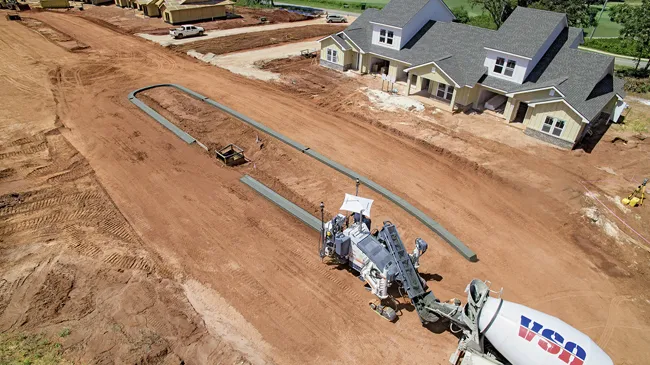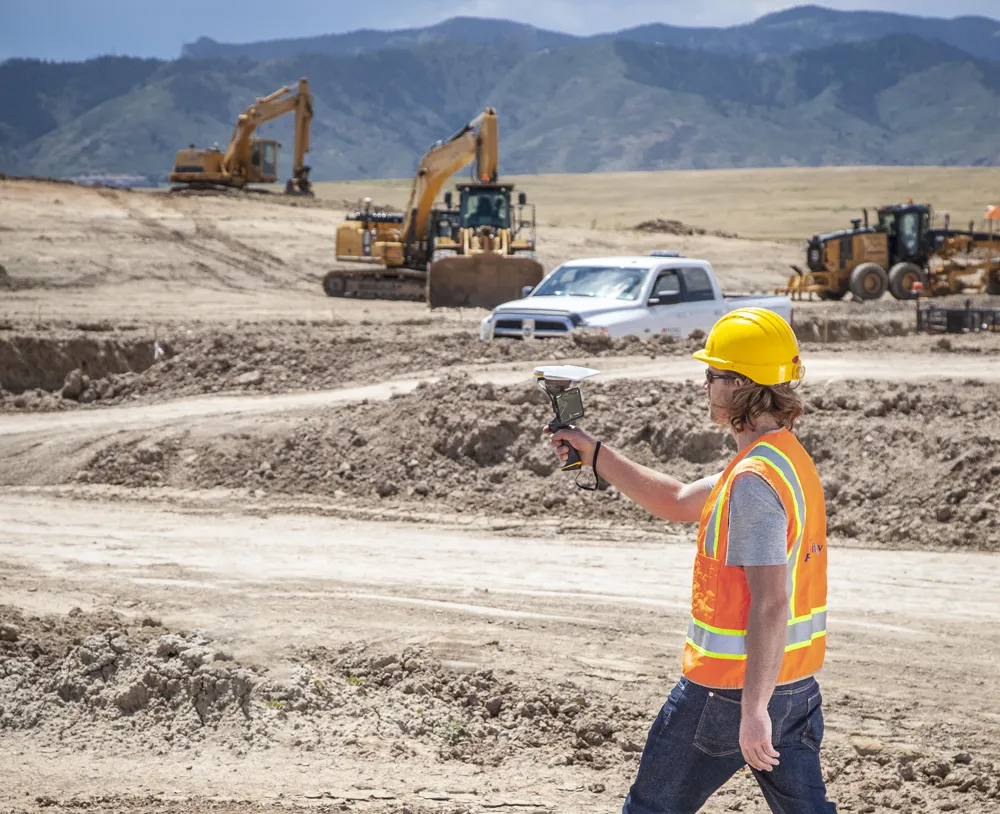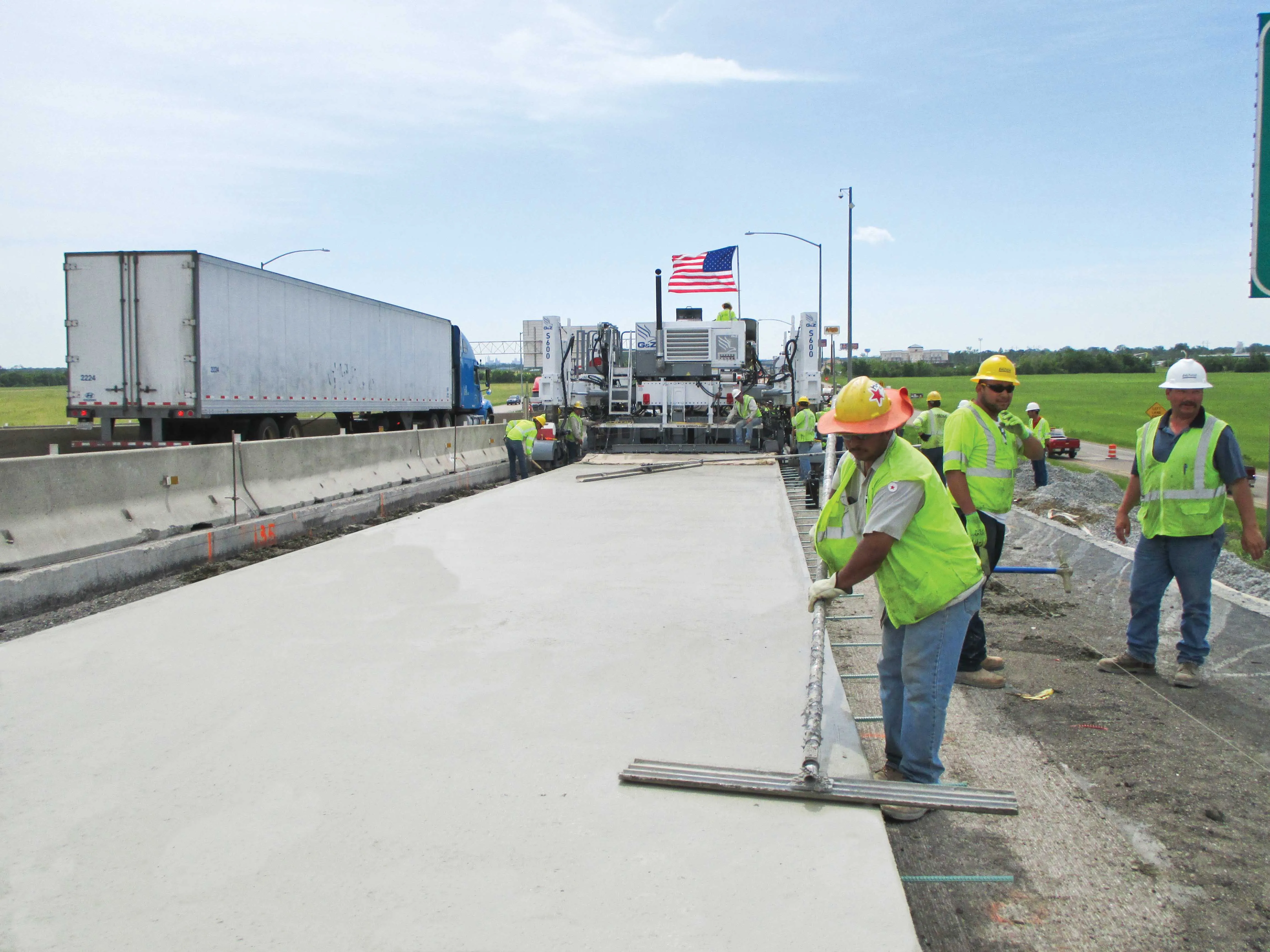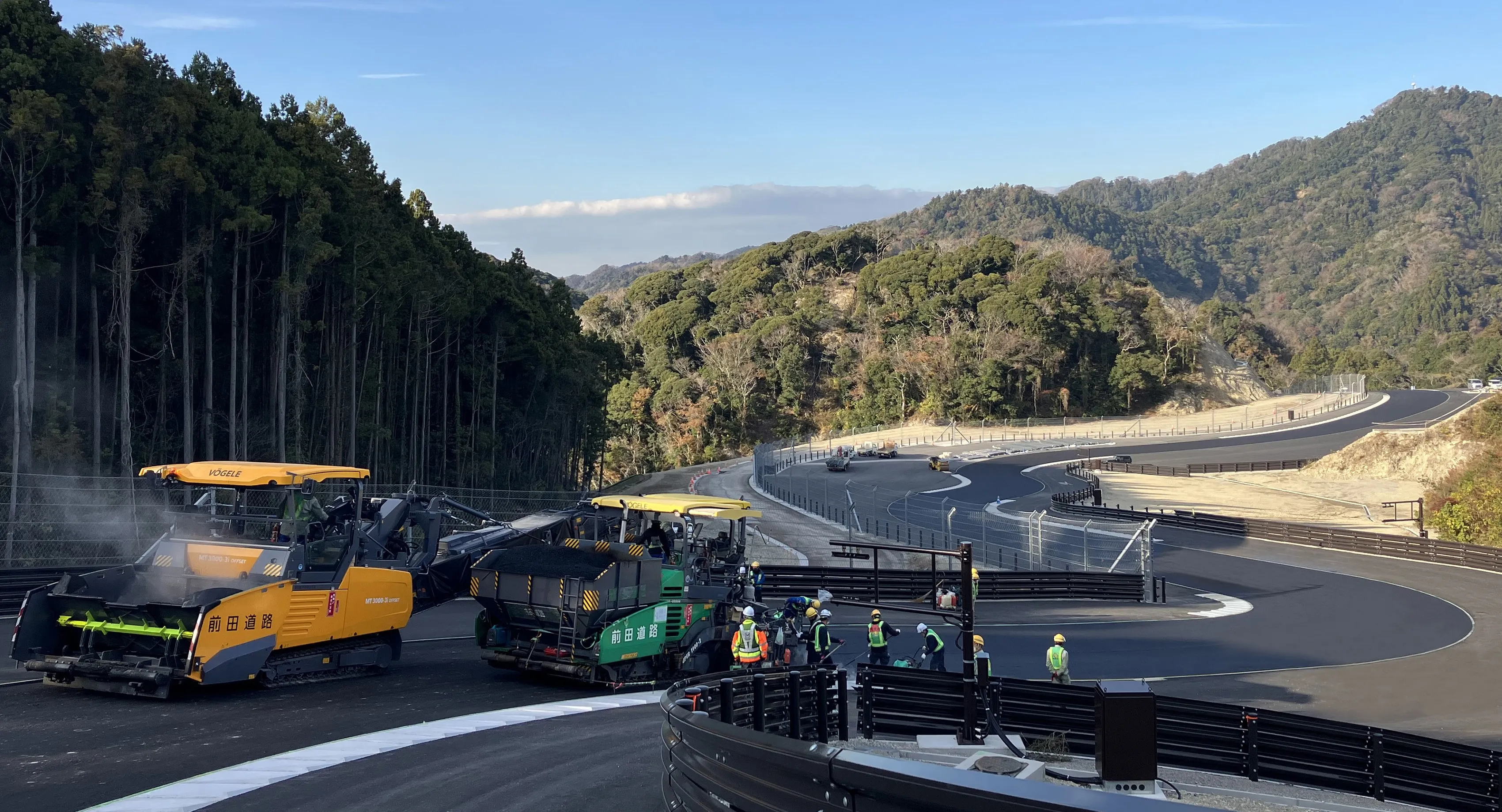
When a new residential area is developed, the individual contract work sections are often very detailed. Roads and paths have to be paved and access roads to the individual plots constructed. Various traffic areas are often separated by concrete structures such as kerbs.
These kerbs can be either pre-cast parts or monolithic profiles produced right on the job site by
A&B’s SP 15i has produced hundreds of running meters of kerbs in a newly-developed residential area in Mobile, located in Mobile Bay on the Gulf of Mexico – working in both tight- and wide-radii as well as different heights and widths. Cost-effective as this method is, one time-critical and quality-sensitive issue usually remains to be dealt with – tensioning string lines. The new-build project in Alabama shows that this job can also be dispensed with. An SP 15i produced all the kerbs fully automatically.
As in many new-build projects, a 3D digital terrain model was available at the Mobile job site. Thanks to its certified standard interface, the SP 15i concrete paver can also be equipped with 3D systems manufactured by other suppliers alongside AutoPilot, Wirtgen’s own 3D control system. Data is transmitted to the machine via a 3D interface and various systems such as the RTK GNSS receiver or automatic total stations are employed during paving.
When working in the small town of Mobile, the paving team of Ammons & Blackmon had to switch between different work sections several times during every work shift. It was obvious that dispensing with time-consuming surveying, tensioning and checking of string lines would greatly increase the profitability of the project.
The supply of material is a much simpler affair, too. Trucks can quickly reach the SP 15i and drivers needn’t be constantly looking for tensioned string lines.
An additional feature of the slipform paver is a trimmer which enables speedy progress. It levels the base to ensure optimum paving. The trimmer drum design is based on Wirtgen milling technology, one of the company’s core competencies. The telescoping trimmer with its helically positioned point-attack cutting tools guarantees uniform profile paving – in a single pass.
Greater paving precision at lower costs: now further advanced by Wirtgen, AutoPilot 2.0 can be used with the SP 15i and SP 25i models to create all manner of offset and inset profiles with even greater efficiency and precision. To this purpose, the 3D system either uses a previously created data model or a new digital data model is produced on the job site – a simple task with the Field Rover survey pole.
The AutoPilot 2.0 software automatically checks the imported or newly-created data for any kinks affecting the steering and grade control. The user can correct unwanted kinks in the model data directly on the tablet with the aid of graphic editors.









